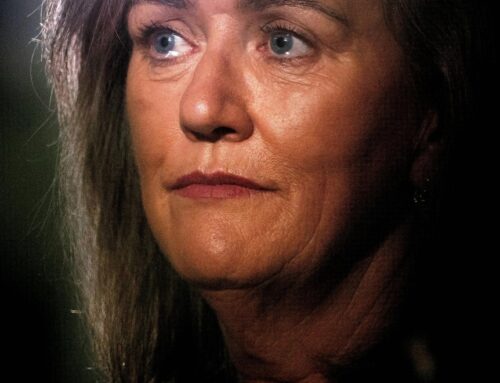One of Australia’s most divisive diggers could be in line for a posthumous honour of sorts, more than 120 years after he was executed for war crimes.
Key points:
- Harry “Breaker” Morant was executed in 1902 and remains one of Australia’s most controversial soldiers
- A lawyer has been lobbying to have Morant’s name added to an Adelaide Boer War memorial
- The matter could now be referred to state planning authorities
Two years after a push to have Harry “Breaker” Morant’s name added to South Australia’s Boer War memorial was put to Adelaide’s City Council, a decision could soon rest with state planning authorities — and the lawyer behind the move is optimistic about the prospects.
Lieutenant Morant and fellow Australian soldier Peter Handcock were shot by firing squad in 1902 after being found guilty of murdering prisoners of war during the colonial conflict in South Africa.
Defenders have long argued that the men were following orders from their British superiors, who have in turn been accused of using them as scapegoats — but critics say that, regardless, Morant was guilty of killing unarmed prisoners.
Military lawyer James Unkles — acting for one of Morant’s distant relatives, Cathie — wants the names of Morant and almost two dozen other soldiers that have hitherto been left off Adelaide’s South African War Memorial added to the CBD monument.
Mr Unkles said he first made an application to the Adelaide City Council two years ago on the family’s behalf.
“To the council’s credit, they’ve spent a huge amount of time … looking at the evidence in support of Harry Morant on the memorial that was built in 1904,” Mr Unkles told ABC Radio Adelaide’s Stacey Lee and Nikolai Beilharz.
“In the research, I discovered not only Morant is missing but also another 22 soldiers whose names are not on the memorial.
“If the names can’t be added to the memorial itself, then you [could] have a nicely-designed plaque raised off the footpath next to the memorial commending those men.”
The city council will discuss the matter at its meeting tonight — but a spokesperson said it would not have the final say.
“Council will tonight be voting to advise Ms Morant and Mr Unkles that they will be required to lodge a development application if they wish to add Breaker Morant’s name to the South African Boer War Memorial,” a spokesperson said.
“Any application will be treated on its merits by an independent assessment panel.”
Deputy lord mayor Phillip Martin explained that a final decision would likely rest in the hands of the State Planning Commission.
“The council has no view on whether or not Breaker Morant’s name should appear on the material, because the council doesn’t have the power to have a view,” he said.
“The council has taken legal advice, and the advice is … that any alteration to a memorial requires state planning approval, and therefore the application should be directed to state planning authorities.”
Mr Unkles said it was his firm intention to pursue that course of action.
“The memorial is a heritage-listed site. It’s owned by the council but it’s subject to state legislation,” he said.
“After tonight, I’ll be making an application under that Act to have his name and the other 22 soldiers added to the memorial. It’s time that we brought this to a conclusion.”
‘Legitimate debate’
When asked what he thought about Morant’s name potentially being added to the memorial, South Australian Premier Peter Malinauskas said he thought it was a “legitimate debate that should be had.”
“I think the consideration of it by those responsible should be done in conjunction with military experts,” he said.
“I don’t for a moment profess to be a historical military expert and I’m not too sure anyone in the Adelaide City Council is either, so I would encourage them to consult with those experts, especially with the war memorial which is of course the pre-eminent authority on matters of this nature.”
Reviled by some as a war criminal, the English-born Morant is regarded by others as a victim of a British kangaroo court.
Shortly before the release of Bruce Beresford’s acclaimed movie about Morant in 1980, Australian author Robert Darroch assessed the case in The Bulletin magazine.
“Like Clancy of the Overflow, Peter Lalor of Eureka, and the Man from Snow River, Harry Harbord Morant — ‘The Breaker’ — is a hero of Australian legend … projected into immortality by cruel fate,” Darroch wrote.
“The legend is false. Morant was not a hero, far from it.”
But Mr Unkles said that, regardless of the debate about Morant’s wartime conduct, he deserved a place on Adelaide’s memorial.
He said the crimes for which Morant was executed dated to his time serving the Bushveldt Carbineers — an irregular military unit — which Morant joined after leaving the South Australian Mounted Rifles.
“The argument for Cathie Morant is simple. She’s not asking for him to be on the memorial for his service to the Bushveldt Carbineers,” Mr Unkles said.
“She’s asking [for him] to be on the memorial solely for his service to South Australia.”



